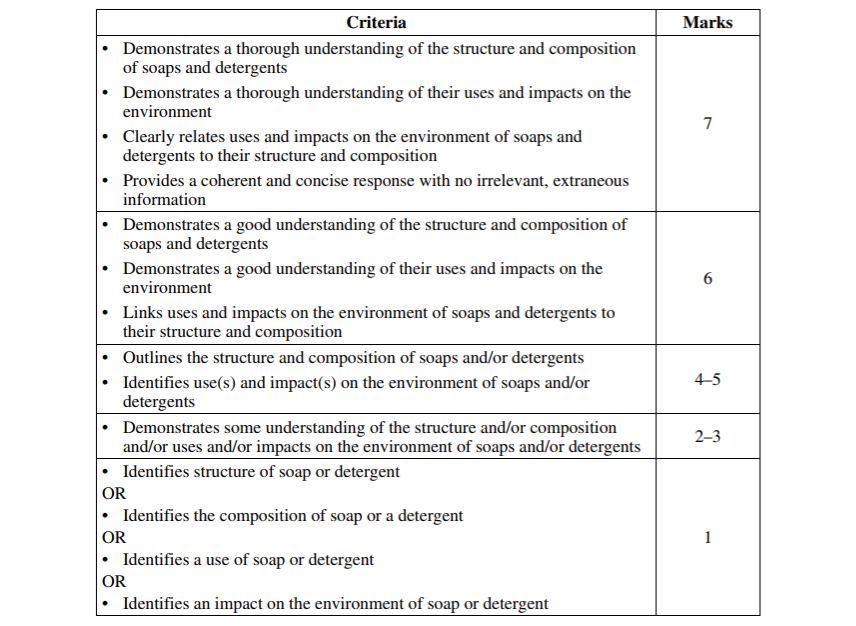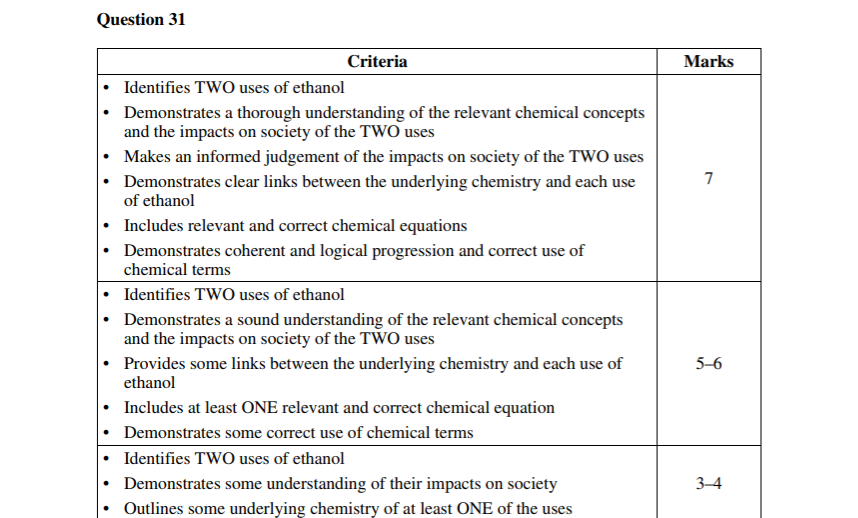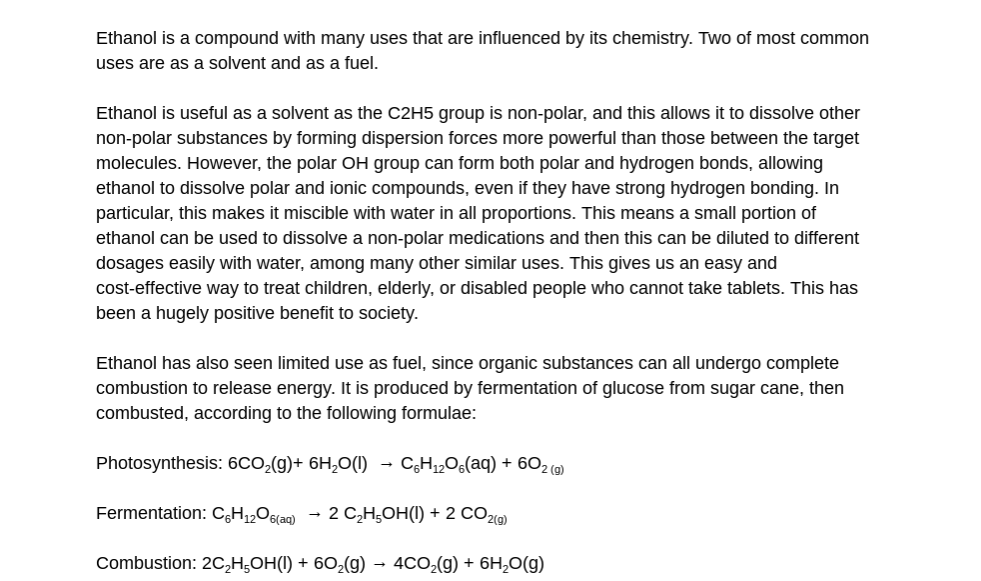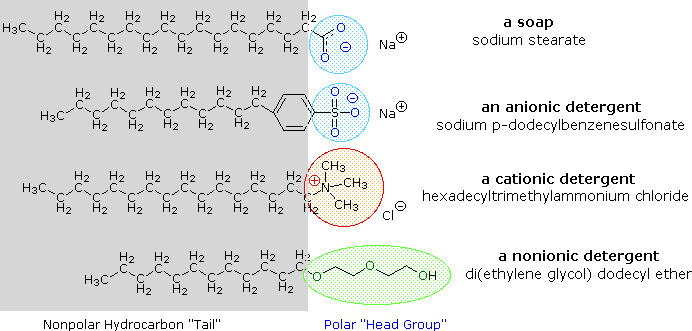
Oftentimes, the secret to getting yourself from a Band 5 to a Band 6 HSC Chemistry extended response isn’t at all in what you’re saying but how you’re saying it.
Never is this more obvious than in a Chemistry 6 or 7 mark question.
It is important to learn how to absolutely smash out good a Chemistry extended response because this is what separates the “good” people from the “great” people.
The best part is – it’s actually pretty easy!
Step 1: Read the question
Step 2: Plan your answer
Step 3: Consider the use of diagrams, tables or flow charts
Step 4: Picture the marking criteria
Sample Response
Step 1: Read the question
It sounds obvious, but you need to pick out the verbs and other directive terms that are going to define what direction you take.
We’ve created a glossary of verbs taken from NESA that you might find in your exam questions below!
Note: Because the NESA definition is not specific to one subject, a column is added to give you an idea of an appropriate approach to the question in the light of Chemistry.
| Verb | NESA Definition | Chemistry Approach |
|---|---|---|
| Account for | State reasons for | Consider the molecular mechanisms that underpin the reactions or observations. |
| Analyse | Identify features and the relationship between them | Usually for graphs or data, describe notable observations and any relationships between them. |
| Assess | Make judgement of value, quality, outcomes, results or size | Usually for long response questions, you will be required to make a judgement based on pros and cons without a certain criteria to adhere to. |
| Compare | Show how things are similar or different | For Chemistry, these responses are often done best in table form. Eg. Column 1 can note similarities while column 2 can describe differences. |
| Critically (analyse/evaluate) | Add a degree or level of accuracy depth, knowledge and understanding, logic, questioning, reflection and quality to (analyse/evaluate) | For Chemistry, these responses have to consider the molecular theories that underpins these reactions. Alternatively for scenario questions, these responses can also consider the societal, environmental and economical implications from the following reactions. |
| Describe | Provide characteristics and features | This is the easiest type of question - just note down what you see and know! |
| Discuss | Identify issues and provide reasons for and against | Unlike “evaluate/assess” questions, you DO NOT need to provide a judgement but you still need to list out the issues and provide arguments for and against your topic. |
| Evaluate | Make judgement based on criteria; determine the value of | While you will need to provide a judgement like “assess” questions, “evaluate” questions focus more on whether objectives are being reached based on set standards. |
| Explain | Relate cause and effect; make relationship between things evident; provide why and how | Identify the molecular mechanisms that underpin your observations and draw out the relationship between theory and observations. |
| Justify | Support an argument or conclusion | In Chemistry, the best way to support your argument is to consider the chemical structure/ properties that underpin the conclusion. To strengthen your response, you can also consider the alternate scenario and explain how it could turn out worse than the original scenario. |
Ultimately, you need to address these directive terms to push your response into the Band 6 criteria. We’ll work through a question here as we go from a past HSC Chemistry paper.
Let’s have a look at this 2014 HSC Question 32(e) (7 marks)
Explain how the differences in the structure and composition of soaps and detergents determine their uses and their impacts on the environment.
First – the verb.
According to the NESA, ‘Explain’ means “relate cause and effect; make the relationships between things evident; provide why and/or how”. Thus, it’s perfectly acceptable to use “cause” and “effect” subheadings to help make your answer clearer.
And now for other directive terms: “Differences in structure and composition of soaps and detergents” – so most of the differences come from the composition, but the question is telling you to address structure as well.
“Determine their uses and impact on the environment” – there are TWO things here: the ‘uses’, and the ‘impact’. That means you have to address both with equal weight.
In your response, note down the chemical structure and composition of that class of surfacant. This is the cause.
And then, how does the chemical structure and composition of the surfactant contribute to its uses and impact on the environment? This is the effect!
Step 2: Plan your answer
Never just vomit information, you have to attack the syllabus points. Take a look at the sample answers below to see what the difference is.
We’ll also plan out our answer to 32(e). There are four classes of surfactant, and for each we need to address uses and environmental concerns with reference to the molecular-level chemistry.
So, a good, easy answer structure that will tick all of the boxes might be:
- Surfactant one: (e.g. Cationic surfactants)
- Uses/environmental impact: pick one to go with here – we’ll write out a use for now
- Cause: The cationic amine group has a positively charged head.
- Effect: Cationic surfactants are great hair conditioners as the positively charged head of the surfactant will be attracted to the negatively charged wet hair, causing the non-polar ends to stick out of the hair, making the hair more shiny and manageable.
And you’ve just built yourself an easy response that aims square for 7/7!
Step 3: Consider the use of diagrams, tables or flow charts
Remember that you have to keep your answer to space provided as best you can!
The more you run over the allotted space, the more risk you run of being penalised.
Representing information visually can display your understanding far more thoroughly than the same amount of writing. Hop on over to draw.io right now and try your hand to constructing a good flow chart.
In our example, it’s a great idea to include structural diagrams of the different classes of surfactant. This proves that know the structure yourself.
Here’s a good example of what your diagrams might look like – labelled with their identity, and also labelling the non-polar hydrophobic tail, and the hydrophilic head.
I do recommend using skeleton structures though, and don’t think you have to memorise the names!
Step 4: Picture the marking criteria
This can get a bit dangerous, because it’s very possible you can guess wrong. But that’s what practice questions were for!
You’ll be far more familiar with patterns in marking criteria than what you might realise.
What might be in our tester question?
Looking at it again, it’s pretty obvious there’ll be marks for understanding the structure and composition of different soaps and detergents.
In the same vein, there’ll be marks for understanding their uses, and environmental impacts (and remember – an impact isn’t always negative!).
Since it’s an explain question, they’re be marks for spelling out the cause-effect relationship between the two.
And there’s always marks for being clear and concise.
They’re our guesses, but what are the real criteria? Let’s take a look!

What do you know? Four for four! Having the idea of how to approach the question will go a long way towards getting into those top two brackets.
So now you know how – time to try it out!
I’ll leave the surfactant question for now – it’s from an option, so you may not need that material covered. And plus, this way you can try writing an answer for it on your own!
Sample Response
So let’s use these steps to run through an example!
7 marks:
With reference to the underlying chemistry and with relevant equations, assess the impacts on society of TWO uses of ethanol. (2014 HSC Chemistry exam)
Let’s be careful here and go through our simple 4-step process:
- Key terms – underlying chemistry, assess (make a judgement of), impacts on society, TWO, uses of ethanol.
- Draw out the syllabus points – ethanol’s uses, the chemistry of ethanol, social impact. Select two uses – e.g. solvent and fuel. Establish what part of chemistry makes it useful in that field. Assess the impact on society.
- A diagram of ethanol’s polar and non-polar ends would be useful for conveying its use as a solvent but also could consume a lot of space – be discerning! Same be said for a flow chart of ethanol as a carbon-neutral fuel. In this instance, I would recommend no – not enough space.
- What’s likely to appear on the marking criteria?
- Connecting ethanol’s chemistry to its uses
- Assessing the extent of its impact on society
- Correct and accurate equations
- Fluency and chemical literacy
For reference, here’s the actual criteria!


Bam. Our guesses were pretty much straight on. So let’s try this again.


Now that is a nice Chemistry extended response.
It’s a shame that it didn’t lend itself to diagrams, and also a shame that the formatting of the chemical states in the equations isn’t consistent, nor are they technically complete.
Reaction conditions should be written above the arrows (this is why I like handwriting these things).
But other than that, it covers everything.
It demonstrates a very deep understanding of the connection between the fundamental chemistry and its uses, awareness of the social dimension of the question and uses clear, concise language.
I don’t mind admitting this Chemistry extended response answer is hundreds of times better than the one I submitted when this question appeared in my actual exams – we all learn from our mistakes! This is an easy 6, and a strong candidate for a 7!
I don’t like saying it’s a surefire 7 because that last mark has less to do with the quality of your answer and more to do with the quality of a typical answer.
The Chemistry exams are marked in such a way that there’s a roughly bell-curved-shaped distribution of marks, so the difference between 6 and 7 isn’t about being good – it’s about being better than everyone else.
For comparison, here’s a Chemistry extended response I might have written without considering any of the above points.

Okay, so what’s wrong with this Chemistry extended response? Or, rather, what’s not wrong with it?
It almost completely ignores the social impact of both uses and uses an incredibly poor example of ethanol as a solvent. Of all the impacts that’s had on society, perfume would have to be the least meaningful.
On top of that, it skims over the relevant chemistry and has no equations, despite the carbon-neutral statement absolutely screaming for three. Three whole equations!
This answer would be lucky to score a 3/7 – with the equations! Without them, it’s almost destined for a 1/7. But, likewise, that bell-curve marking could pull it up to a 2/7 if there are some other really poor responses.
But why was the first Chemistry extended response so much better?
Because of practice, attention to detail and hard work.
Want to go a step further? Start using these Top 5 Study Tips to get a Band 6 in HSC Chemistry this year!
Looking for extra help with HSC Chemistry?
We pride ourselves on our inspirational HSC Chemistry coaches and mentors!
We offer tutoring and mentoring for Years K-12 in a variety of subjects, with personalised lessons conducted one-on-one in your home or at our state of the art campus in Hornsby!
To find out more and get started with an inspirational tutor and mentor get in touch today!
Give us a ring on 1300 267 888, email us at [email protected] or check us out on Facebook!
Matt Saunders is a huge nerd who first got into writing through fanfiction. He’d known science was the path for him since a young age, and after discovering a particular love of bad chemistry jokes (and chemistry too), he’s gone onto to study Forensic Chemistry at UTS. His HSC in 2014 was defined in equal parts by schoolwork and stagecraft, which left him, weirdly enough, with a love of Maths strong enough to inspire him to tutor any level, along with 7-10 Science and HSC Chemistry.



